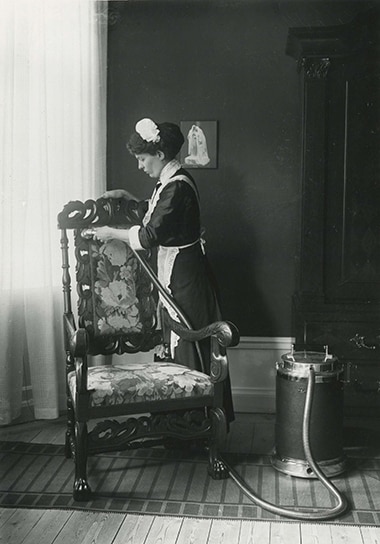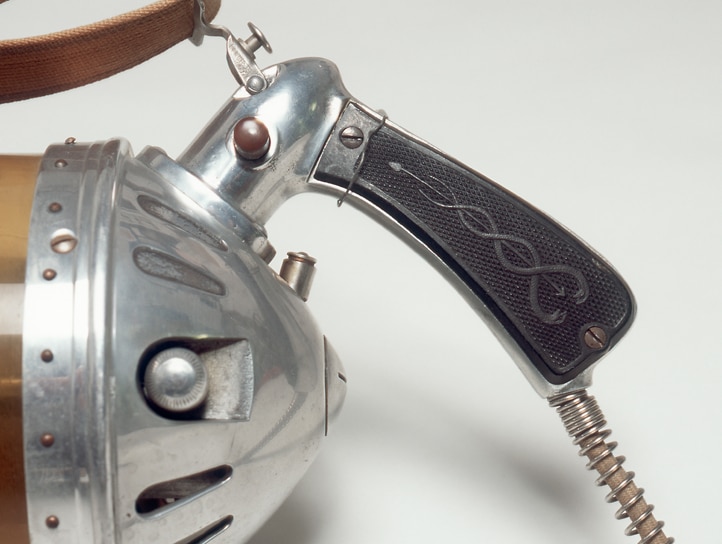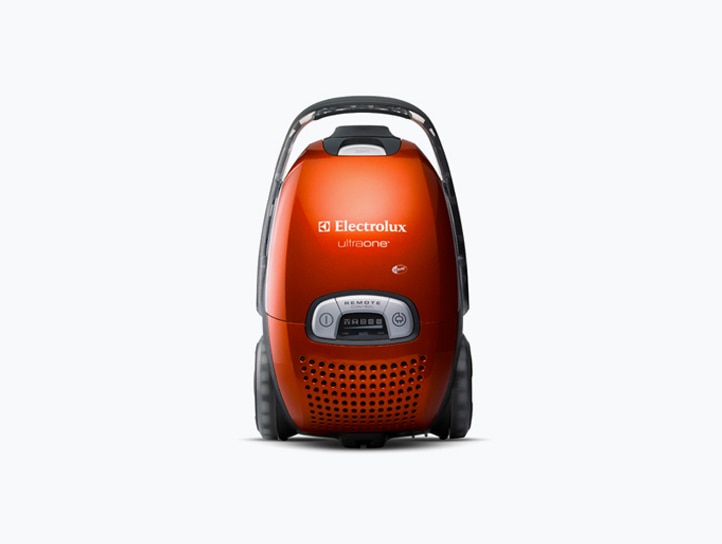It is difficult to underestimate the importance which 1920s consumers placed on hygiene. If “green” and “environmentally friendly” are the watchwords of our times, “healthy”, “clean” and “sanitary” were the axioms of theirs. This belief in the importance of a clean, hygienic home was a major success factor for the sales of the Model V vacuum cleaner.

Vacuuming with model Lux I in 1925
Sweden had many popular movements in the early 20th century: the teetotal movement, labor movement and the suffrage movement, to name just a few. One of the most influential of these was the hygiene movement.
Pasteur had discovered bacteria in 1860 and made clear the connection between dust and dirt and germs. A dirty home was an unhealthy home. Hygienism was dedicated to the healthy home and its popularity paved the way for the vacuum cleaner which was to be a prime weapon in the war against disease.
Both in-house and in public, Electrolux talked about their mission to spread awareness of the health benefits of vacuum cleaning among the households of Sweden. It would spread cleanliness and hygiene and save time and money. The company made sure to stress all this when marketing the Model V. One ad showing an elegant housewife at work with the cleaner promised “The new cleanness”.

The handle of a Model Lux V with the image of Asclepius - the god of medicin in greek mythology
This strengthened the brand and its connection to healthy living and respected authorities in the field of health. Asclepius and his daughter Hygieia, the goddess of health, had made a major comeback in the 19th century and often appeared in a medical context.
Scientific research into the housewife’s domestic chores
The Electrolux product development team continued to keep a close eye on the latest research. In the 1950s the Swedish Home Research Institute (HFI) were important pioneers and attracted considerable international attention. Founded in 1944, the HFI’s task was to rationalise housework and do research into domestic tasks in a logical, scientific way. Housewives doing the washing up wearing an oxygen mask were an unexpected sight but could lead to useful ergonomic discoveries.
Examining the “invironment” with the aid of the UltraOne
The connection between vacuum cleaners and health continues to this day. In 2014, the Electrolux UltraOne, a machine with a completely closed system, was used in the “Invironment Project”, an examination of the indoor environment of seven major international cities with air pollution issues by means of examination of the content of the cleaner’s bag. Modern models always have seal of approval from asthma and allergy organisations.

The ultraone was one of five vacuum cleaners with a cohesive design style which made up the UltraCollection
In 2010, to raise awareness of oceanic pollution, Electrolux created a series of five unique vacuum cleaners: the Vacs from the Sea. Each was manufactured from recycled plastic from a different ocean. It was an eye-catching and thought-provoking initiative which attracted considerable attention.
A concern with a healthy lifestyle and trust in the power of science and technology to improve our lives has followed the Electrolux vacuum cleaner throughout its long career. Modern, global research by the company continues this tradition into the new millennium.

